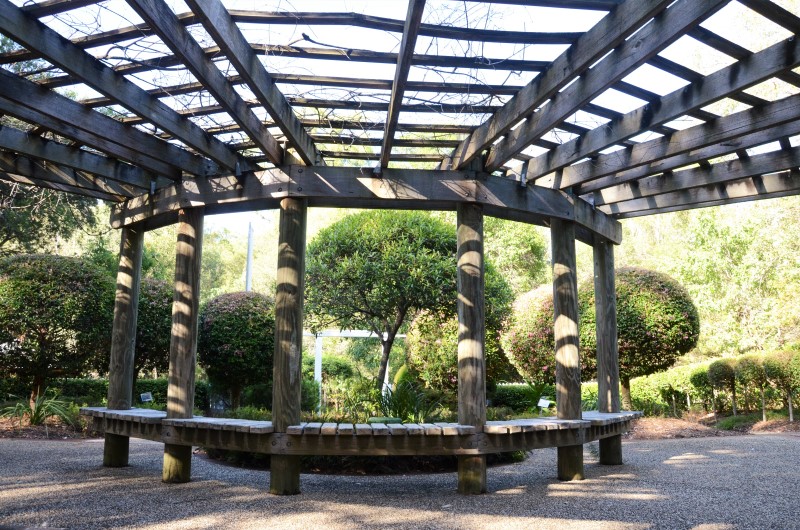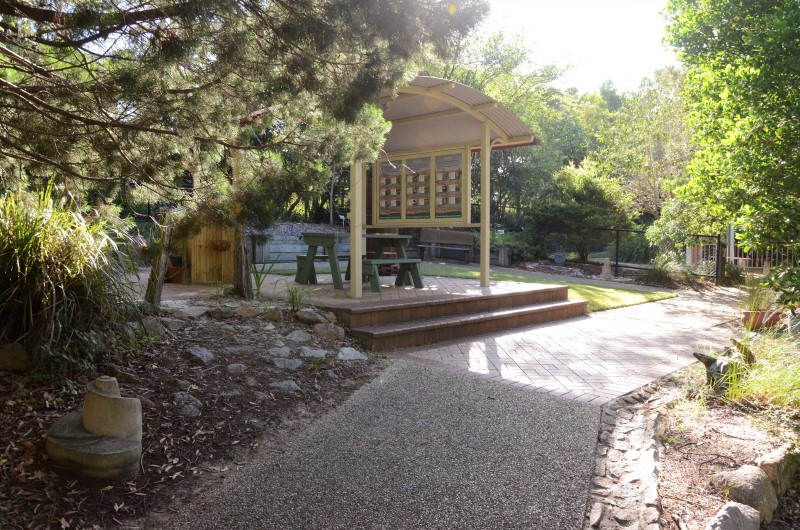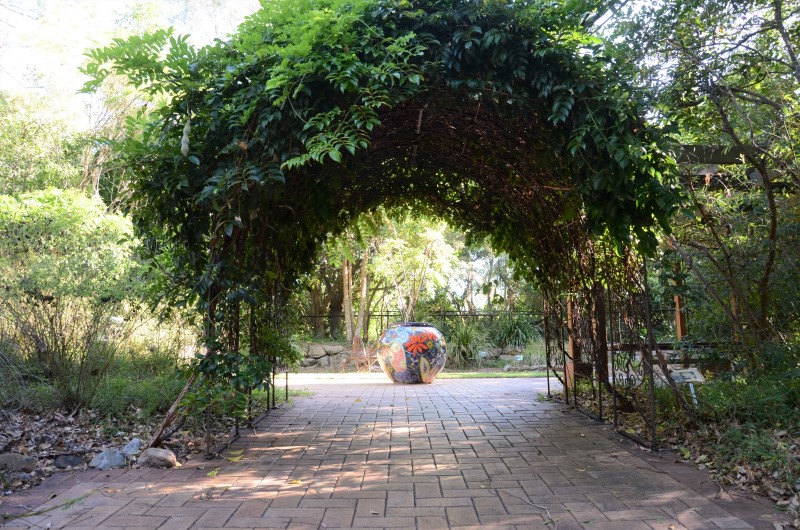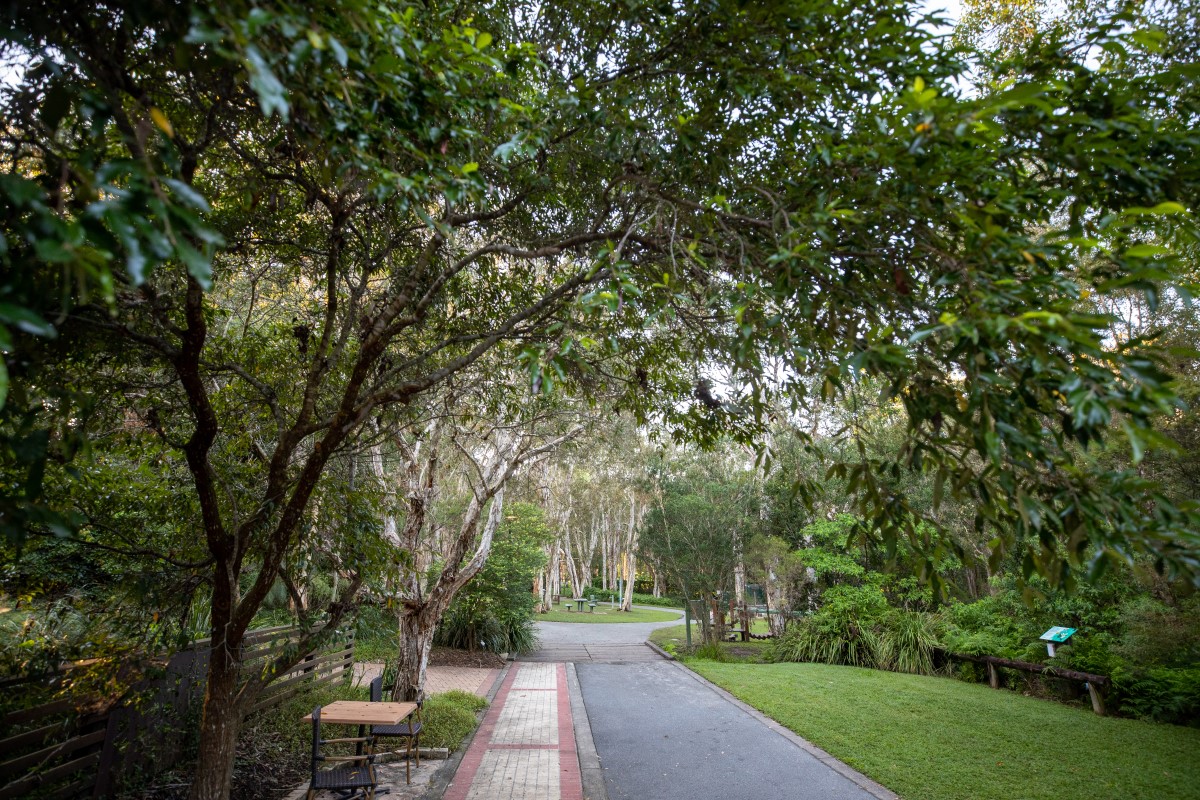
Visit our botanic gardens and get inspiration for your own backyard.
We have a number of gardens that showcase different native habitats. They might give you some handy tips on how to transform your own garden.
Did you know that you can hire the gardens?
Stay up-to-date with our events, workshops and programs by signing up to our newsletter
-
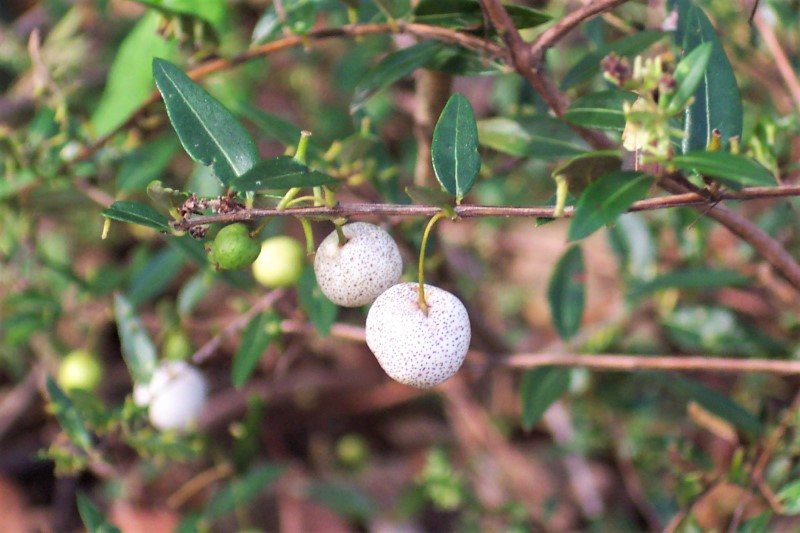
Australia is a great place for bush tucker with Aboriginal Australians surviving tens of thousands of years with our native plants as a significant part of their diet.
There is something rewarding about growing native plants that have a human use. Even if we know it's pretty unlikely that we'll cook with them or use them medicinally, somehow it gives us a great feeling to know that if we really had to, we could go out and reap a bountiful harvest from the garden.
The Redlands Coast has its share of useful plants and we have gathered many in our bush tucker garden.
The majority seem to come from coastal dunes or rainforest. The hillsides in between were a bit lacking but it was these habitats that historically produced an abundance of meat. Some of the best bush tucker plants are also amongst the hardiest species available and any backyard environment can be made to accommodate some edible or medicinal plants.
Visit IndigiScapes and our Native Nursery to learn and buy the perfect plants.
-
This garden demonstrates that you too can achieve a formal design even when using plants that have all been propagated from bushland areas along Redlands Coast.
By placing plants in geometric patterns such as straight lines, triangles and circles and pruning shrubs into rounded topiary, square hedges and geometric shapes, you too can create a formal native garden.
A mirrored design, so that one side of the garden is exactly the same as the other side, is another way to get a formal look.
A formal garden, even a native one, will still need more regular care than other native gardens. Most of the shrubs and trees within this garden will tolerate pruning. A regular light prune is more effective for shaping than lopping once a year. Hedging and shaping of plants needs to start from early in the life of the plant and continue frequently.
-
Coastal plants can find a place in just about any garden. They are amongst the toughest of all plants, built to withstand full sun, little rain and salty spray.
This makes them the best plants for any garden close to the coast but also further away, given their ability to cope with hardy conditions.
Coastal plants are typically full of colour. Many have large, colourful flowers with yellow, white and pink especially prevalent.
Many have hairy or waxy coatings on the leaves and white under-surfaces that reflect heat and light. This leads to a variety of leaf shapes and colours that add diversity to the garden.
The range of ground covers here is higher than any other habitats as they have evolved to take on an important role in the stabilisation of dunes.
Many coastal trees make great windbreaks and are able to withstand storms. They are also typically fast growing, a necessity in moving sand dunes. Coastal areas have abundant bird life, especially nectar feeders, and an assortment of these species will help you attract these birds to your garden.
-
The key to attracting a wider variety of native wildlife to your garden is to plant an assortment of dense shrubs, groundcovers and trees.
By choosing a wide variety of local native plants you can provide a culinary delight for mammals, reptiles, birds and insects in your garden. Select plants that produce flowers, fruits and seeds at various times of the year to cater for animals with different diets. This is a better alternative to feeding wild animals which can lead to ill health and dependency.
Bird baths are a sure way to entice the local wildlife into your backyard. If you place a shallow dish of water up off the ground near shrubs the birds, bees, water dragons and possums will soon come to enjoy a drink and some may even entertain themselves with a bath. Place rocks in water to allow animals to climb out if they fall in.
Big old trees, dead and alive, provide hollow homes for birds, possums, gliders and pythons.
Providing wildlife-friendly fencing will allow wildlife to enjoy your safe sanctuary as they move through your neighbourhood. Please be sure to keep cats and dogs inside at night.
-

Small remnant patches of rainforest remain in Mount Cotton and Sheldon along the coastline and on the Bay Islands. Prior to European settlement there would have been a lot more rainforest, particularly in Wellington Point, Ormiston, Cleveland and Redland Bay.
Rainforests are the most diverse ecosystems on earth and occur in areas of high moisture, but often poor soils. Most of the nutrients are stored in the living plants and leaf litter rather than the soil and this is cycled through rapidly by many fast-acting and effective invertebrates in the leaf litter. Most rainforest plants are tall trees that grow quickly to reach the life-giving light at the forest canopy.
Rainforest trees often have attractive shape and foliage, making them excellent garden specimens. In a more open garden they rarely reach the heights they do in the wild as they have no need to shoot straight up for the light. This leads to shorter, bushier specimens where the flowers and fruits are more visible.
The hardiness of this group varies enormously but they will generally require a good mulch layer to keep the soil cool and moist and some water during hotter months. Our rainforest garden took three years to establish and hasn't been watered since. -
<
Bursting with life and constantly changing, wetland gardens make an interesting focal point in any backyard.
Wetland gardens are not just for large properties with frog ponds and dry creek beds, they're becoming very popular in smaller gardens too.
Our wetland garden displays plants that occur naturally in and around swamps, lakes, dams, creeks, rivers and tidal areas in the Redlands Coast. They have adapted to thrive in moist soils and those that occur in tidal areas are able to cope with a certain amount of salt.
These adaptions make them the perfect choice for waterlogged or flood prone areas of your property. The majority of wetland plants are hardy and versatile though, able to cope with long dry periods typical of our unpredictable climate. This makes them suitable for most garden situations, just needing to be watered during the hottest, dry periods.
Whether it is a natural, man-made, large or small, wetland plants are the key to creating a healthy habitat and provide homes for frogs, reptiles, dragonflies and birds.
-
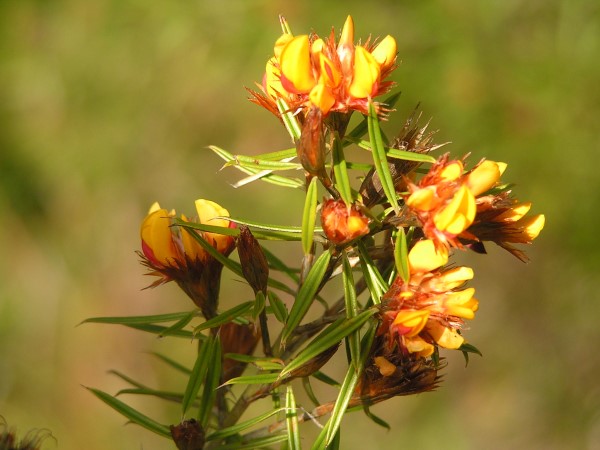
Spring and Autumn is when the forest comes alive, with the wildflowers putting on a colourful show.
You can create a vibrant garden by filling it with many different types of native flowering plants. Add yellow buttons, guinea flowers, paper daisies and native violets for pops of colour near your feet.
Plant some small trees and shrubs like the sago bush, bush peas, hovea, banksias and wattles to brighten up any garden that needs extra charisma.
Planting a garden filled with wildflowers will be sure to attract an abundance of birds, butterflies and bees too

